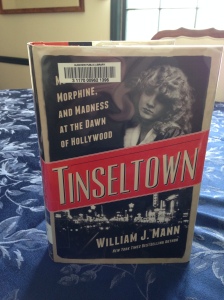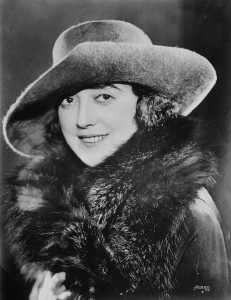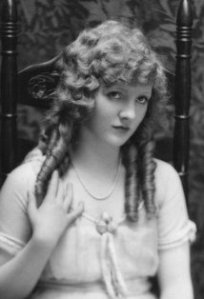On a chilly February morning in 1922, William Desmond Taylor was found lying dead on the floor of his Hollywood home with a .38 caliber bullet lodged in his guts.
His murder shocked the film industry. After all, everyone loved Taylor. A clean-shaven 48-year old with neat gray hair, a prominent nose and soft eyes, he carried himself with studied poise and dignity, always dressed in monochrome grays and tans with never a hair out of place. Unlike his more flamboyant colleagues in Hollywood, Taylor was the soul of discretion: highly reserved and private, he was also genteel and kind, with a manner that often put others at ease. While he rarely talked about his past—all he would ever say is that he had known “great sadness” in his life—no one seemed to mind. As an ardent public defender of the movies and genuinely nice human being–a rarity in the cutthroat world of Hollywood–Taylor was one of the most respected figures in the film industry. Why on earth would anyone kill him, and who would have the nerve to do such a thing?
These are some of the questions William J. Mann tries to answer in his Edgar-nominated true crime book, Tinseltown: Murder, Morphine, and Madness at the Dawn of Hollywood (HarperCollins, 2014). While taking the reader through the twist and turns of the Taylor investigation—an intricate mess involving Hollywood drug rings, desperate con men, secret gay bars, lovesick underage movie stars, and flagrantly mishandled evidence—Mann tells another story: that of early, Pre-Code Hollywood struggling for its life against a rising tide of censorship.

The cover to Mann’s book, courtesy of me. Sorry for the bad photo—Amazon wouldn’t let me use theirs. :p
Taylor’s murder, it seems, could’t have happened at a worse time. Hollywood was already embroiled in shocking scandals, from screen heartthrob Wallace Reid’s cocaine rings to sensational murder trials like Fatty Arbuckle’s, who was accused of murdering young actress Virginia Rappe at an out-of-control hotel party. Moralists were baying for Hollywood’s blood. Around the country, little “church ladies”—the same ones who’d pushed the Volstead Act through Congress just a few years earlier—were mobilizing in full force, pushing to have Fatty’s movies banned from theatres and to have the government take over Hollywood so it could produce only “clean” movies.
The shocking secrets uncovered during Taylor’s murder investigation—some of which were actively buried by studio executives and have yet to see the light of day, according to Mann—would only add fuel to the fire, and the resulting scandal would lead to the induction of William Hays, the eventual creator of the notorious 1930 Hay’s Code, which dictated what could and couldn’t be depicted on-screen for decades.
Mann’s take on Hays, however, is a pleasant surprise. Rather than coming off as a self-righteous, anal-retentive jerk, Hays is described as basically a nice guy with terrific PR skills who did his absolute best to help the film industry survive, with the Hays Code coming off as a shrewd attempt to mollify the moralists–especially since it wasn’t truly enforceable until the 1930s. Interesting, complex, and colorfully-drawn characters abound in Tinseltown. Adolph Zukor, the supreme owner of Famous Players-Lasky and the eventual founder of Paramount Studios, was another person I found intriguing; known as “Creepy” by his employees, Zukor ghosted around his lots like a ninja, exercising monomaniac control over the film industry behind the scenes. Mann’s spot-on characterizations are bolstered by his breathless writing style, which moves between solid, engaging narrative non-fiction and gossipy Hollywood magazines, a style that works very well given his subject matter.
Where Mann falls short, however, is his treatment of the murder investigation. While Taylor’s investigation was clearly mishandled by the DA in charge of the case—he locked up key evidence and kept it away from the cops for years, while some of it magically went “missing” in an attempt to shield one of the suspects (ironically, NOT the person Mann ends up fingering)—Mann often abandons the case in favor of discussing the film industry’s battle with the moralists, which, while interesting, often overshadows the murder investigation. When he finally comes back to it and tries to draw all the threads together—some of which he abandons entirely—the results seem rushed and jarring, especially once he jumps into present time to talk about how he personally got involved in trying to solve Taylor’s murder.
Overall, however, his theory about “whodunit” is convincing. Mann initially fingers three “desperate dames” as connected to the murder: Mabel Normand, a popular comedy star and close friend of Taylor’s who was hounded by aggressive drug dealers; Mary Miles Minter, a child star who was desperately in love with Taylor with an overprotective, gun-toting battleaxe for a mother; and Margaret “Gibby” Gibson—otherwise known as Patricia Palmer—a jealous small-time actress who ran with a crowd of blackmailers and con men. As he shifts between each woman, describing their connections to Taylor and how they dealt with the investigation, Mann explores the more tawdry aspects of early Hollywood life, replete with drugs, scandal, sex, illegal booze, wild parties and gossip rags. It’s a lot of fun. After all, who knew that screen heartthrob Wallace Reid rang a cocaine ring out of the studio lots, with almost everyone getting a cut of the proceeds?

Mabel Normand, once one of the most popular actresses in Hollywood. Could her drug dealers have killed Taylor, after he helped her get clean?

Mary was desperately in love with Taylor, so much so that she’d show up at his house at midnight wailing about her love for him. Could her overprotective, .38-toting mother have shot Taylor when she caught them together in an embrace? The press certainly thought so!

A little-known actress who barely scraped by on bit parts thanks to almost getting arrested for prostitution, Gibby somehow always managed to land a gig in Lasky movies. Could the studios be giving her roles to shut her up regarding Taylor’s secrets? And could her blackmailing friends be hitting up Taylor for dough?
In spite of its rushed ending, I would definitely recommend Mann’s book. It’s a terrific, compelling introduction to an unsolved murder case, with a lot of great information on the key players involved as well as the world they lived in. Readers who like film history, silent movies, Hollywood scandal, and historical true crime will really enjoy this book. I highly recommend it, and I wouldn’t be surprised if it wins an Edgar Award this year!
EXTRA! EXTRA!
- Mann’s book briefly touches on Roscoe “Fatty” Arbuckle’s murder trial, which was happening at roughly the same time (Rappe died in 1921, but the case went to trial three times and finally ended in acquittal during 1922). Arbuckle’s trial, and the industry scandal it spawned, had many parallels with Taylor’s case. For another look at many of the key players in Mann’s book, and for more on Fatty’s trial, try Greg Merritt’s excellent Room 1219: The Life of Fatty Arbuckle, the Mysterious Death of Virginia Rappe, and the Scandal That Changed Hollywood (Chicago Review Press, 2013).
- Mann claims in his Acknowledgements section that he couldn’t “have written this book without the extraordinary work of Bruce Long. Three decades ago Bruce started discovering, assembling, analyzing, and making available material on the Taylor murder. This book is one of many that owes him an incalculable debt: every study of American silent films benefits from the material Bruce has compiled” (Mann, 427). While Long has written his own book on the murder, William Desmond Taylor: A Dossier, there is a ton of excellent information about the case on his wonderful website, taylorology.com.

It sounds very interesting. I find ot’s always a bit awkward when the author strides away from the main subject to go about telling other stories, but if the material is interesting, I normally don’t complain too much.
Early Hollywood must have been a very ‘interesting’ place 😉
LikeLike
Yeah, that bugs me too. I read a LOT of true crime and it seems to happen to a lot of authors in the genre–probably because they’re so invested in their research by that point and can’t bear not to include it all–even when its probably not necessary. I can certainly sympathize, but sometimes that stuff is better left to the footnotes.
Early Hollywood was a very interesting place! It’s pretty much always been that way, even from the beginning. And it was much more like a small town in the beginning, too–the film community was very tiny and everyone knew everyone’s business–which was why Taylor’s secrets (some of which were pretty huge/shocking for the time) were so crazy. The fact that the press never found out about them until he died was pretty amazing, too…
LikeLike
Hey, I know this has nothing to do with this post, but I don’t know how else to contact you.
Are you doing the A to Z Challange in April? I am, theme “Roaring Twenties” of course 😉 I was thinking it’d be fun if you did it too.
At the moment, I’m still short of the letters Q and Z
LikeLike
Oh hey! I’m sorry to ask, but what’s the A to Z Challenge? Sounds fun! Might be up for it, depending what it is. 🙂
LikeLike
It’s a challange that takes place in April. You blog every day except Sundays and each day the post is inspire to a letter from the alphabet. So, on the 1st you blog about something starting with A (I have Anti-Saloon Leage, for example), the 2nd you blog about something starting with B (I’ll be posting about black-and-tans), and so on.
Partecipants are then supposed to visit at least other five blogs a day and leave comments.
I love challanges, so I am doing it… even if I’m a little freaking out at the moment because I’m still researching and have nothing written yet.
Here’s the link to the official site http://www.a-to-zchallenge.com/
I hope you’ll enter 🙂
LikeLike
That sounds like an amazing challenge! Sadly, due to the timing, I don’t think I can do it. I work full time while taking night classes, and while I’m on break right now my next class starts in the middle of April. Maybe I could do half of the alphabet instead? Will have to think about it. Anyway best of luck to you with it! I can’t wait to see what you write for everything—especially Z! 🙂 if you run out of ideas let me know, maybe I could suggest a few 🙂
LikeLike
Thanks for bringing this book to my attention! The Taylor murder is one of my “top” crime mysteries, so I’ll be curious to see this author’s take on that singularly messy mystery.
LikeLike
Thanks for bringing this book to my attention! The Taylor murder is one of my “top” crime mysteries, so I’ll be curious to see this author’s take on that singularly messy mystery.
LikeLike